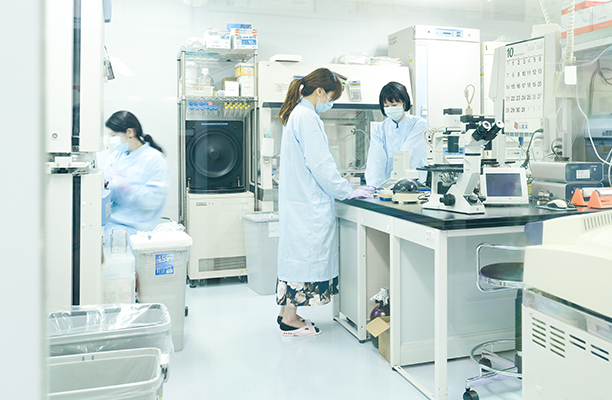In modern medicine, few dilemmas have proven as stubborn, or as deadly, as the management of severe pain. Every day, surgeons, oncologists, and primary care physicians face the same impossible trade-off: relieve suffering with opioids and risk addiction, or withhold them and leave patients in agony.
Now, a research team at Kyoto University may have found a way to break that cycle. They have developed a new painkiller described as both safer and more effective than fentanyl, one of the strongest opioids known to medicine. If their early findings hold true, this compound could mark the beginning of a new era: pain relief without catastrophe.
The Human Cost of Pain and Opioids
Consider two patients.
One is a 52-year-old woman recovering from spinal surgery. Her doctor prescribes oxycodone to help her walk again without excruciating pain. Within weeks, her tolerance builds. When her prescription runs out, she finds herself restless, sleepless, and desperate. What began as medical care slides into dependency.
The other is a 67-year-old man with late-stage pancreatic cancer. For him, fentanyl is a godsend. It allows him to spend his final months lucid, mobile, and able to say goodbye to his family. Yet his doctors constantly monitor dosage, knowing that even a slight error could shut down his breathing.
These stories, variations of which play out in hospitals every day, capture the impossible line opioids force medicine to walk. Relief and ruin are separated by the thinnest of margins.
In the United States alone, more than 80,000 people died from opioid overdoses in 2023. Canada and Europe face rising tolls as well. At the same time, in large parts of Africa and Asia, patients die in agony because doctors, fearing misuse, under-prescribe opioids even when they are desperately needed. The world is trapped: too much, too little, or the wrong kind.
Fentanyl: The Double-Edged Benchmark
Fentanyl sits at the center of this crisis. Synthesized in the 1960s, it was hailed as a breakthrough: up to 100 times more potent than morphine, with rapid onset and short duration. For cancer patients and surgical wards, it became indispensable.
But its very strength makes it treacherous. Micrograms can mean the difference between life and death. On the streets, illicit fentanyl has been cut into heroin, counterfeit pills, and even stimulants, driving overdose deaths to historic highs. To develop a drug that can rival fentanyl in power without carrying its lethal risks would be nothing short of revolutionary.
Kyoto University’s Breakthrough
The Kyoto team, led by pharmacologists with expertise in neurochemistry, has designed a compound that takes a different approach to pain. While traditional opioids bind to receptors in the brain that control both pain suppression and reward, the new drug seems to uncouple those effects.
In preclinical studies, it blocked pain as effectively as fentanyl but did not activate the same reward pathways tied to euphoria, dependency, or dangerous respiratory depression. In plain terms: the compound relieved pain without triggering the mechanisms that make opioids addictive and deadly.
If confirmed in human trials, this separation could redefine pain management.
Why This Matters Beyond the Lab
The implications are staggering.
-
Chronic pain: Millions live with arthritis, nerve damage, or back injuries that erode quality of life. A safer drug could restore mobility and independence without risk of lifelong addiction.
-
Cancer care: Strong painkillers are often unavoidable, yet patients and families live with constant fear of dependence. A new option would transform treatment protocols.
-
Surgery and recovery: Many opioid addictions begin after routine surgeries. A safer drug at this stage could prevent thousands of future overdoses.
-
Global equity: In low- and middle-income countries, doctors often under-prescribe opioids out of fear. A new class of drugs could close the gap between undertreatment and abuse.
Lessons from History
Caution, however, is vital. In the 1990s, pharmaceutical companies marketed opioids as “safe” and “non-addictive” when prescribed for pain. Those claims fueled the current crisis. Any new compound, no matter how promising, will need extraordinary transparency and rigorous, independent testing to avoid repeating those mistakes.
Experts stress that clinical trials will take years, and regulators like the FDA and Japan’s PMDA will demand exhaustive evidence before approval. Manufacturing and distribution will add further complexity. And perhaps most critically, public trust must be earned after decades of betrayal.
A Japanese Contribution with Global Reach
Japan has long been a hub of medical innovation. Kyoto University itself has a track record of breakthroughs, most famously the discovery of induced pluripotent stem cells by Nobel laureate Shinya Yamanaka. This new painkiller could join that tradition, not only as a scientific achievement but as a humanitarian one.
If successful, it would give Japan a central role in reshaping global pain management and in addressing one of the most pressing health crises of the 21st century.
Conclusion
The story of pain medicine has always been one of uneasy compromise: opioids that heal and destroy in equal measure. The work at Kyoto University suggests that compromise may not be permanent.
A drug as powerful as fentanyl, but without its deadly trade-offs, would offer something medicine has never had before: pain relief unchained from the specter of addiction.
For the millions who suffer daily, for the doctors forced into impossible decisions, and for societies ravaged by opioids, it represents more than science. It represents hope.
The last great revolution in pain management gave the world opioids. The next may finally free us from them.

